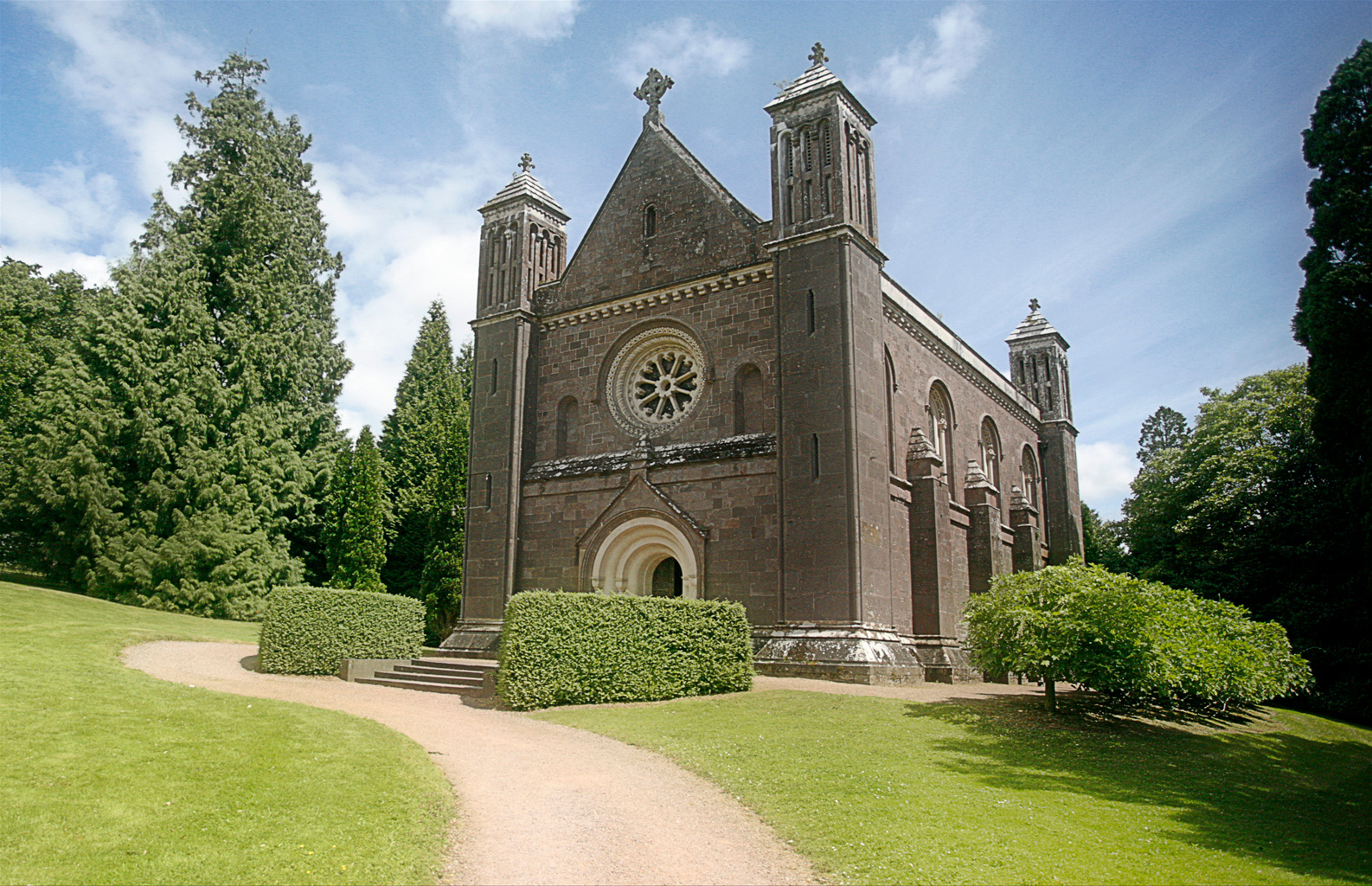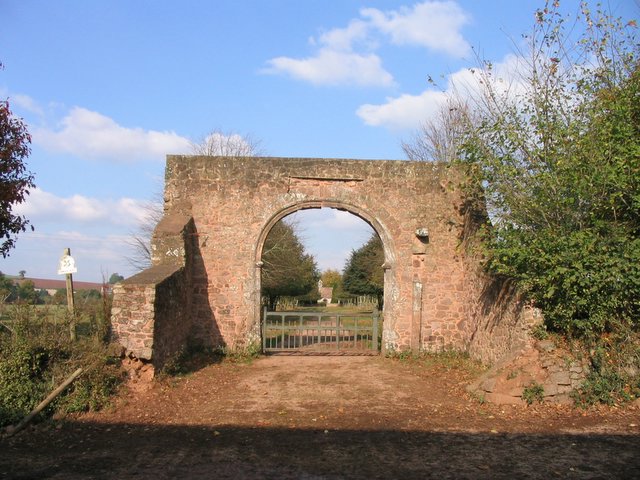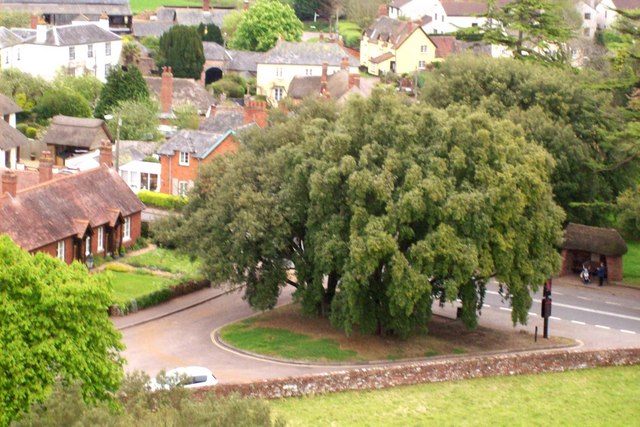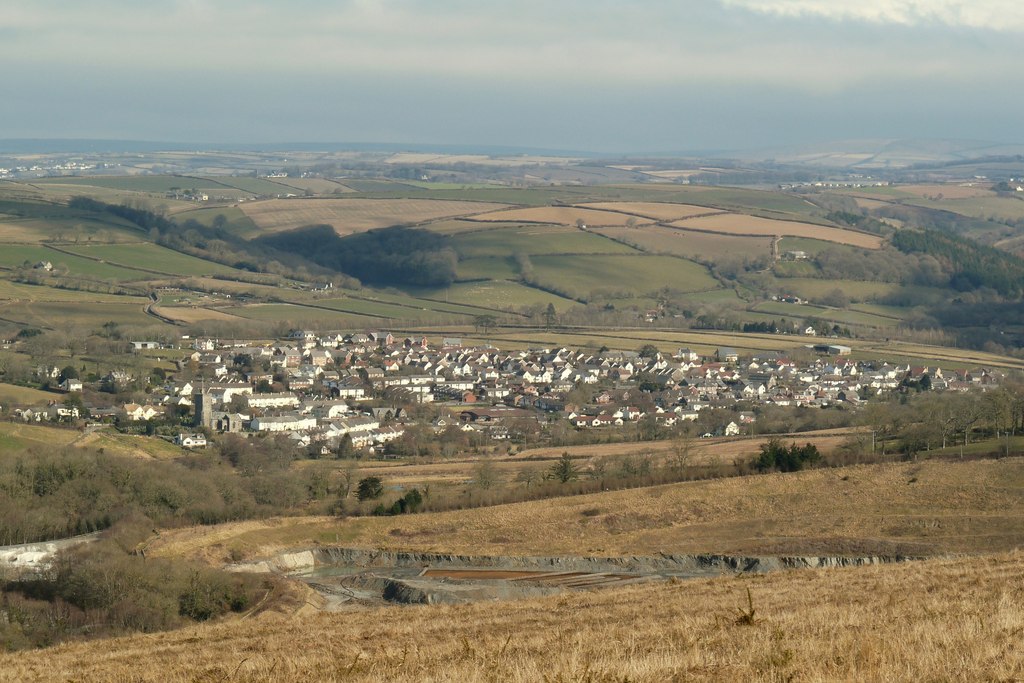|
Killerton
Killerton is an 18th-century house in Broadclyst, Exeter, Devon, England, which, with its hillside garden and estate, has been owned by the National Trust since 1944 and is open to the public. The National Trust displays the house as a comfortable home. On display in the house is a collection of 18th- to 20th-century costumes, originally known as the Paulise de Bush collection, shown in period rooms. The estate covers some 2590 hectares (25.9 km2, 6400 acres). Included in the estate is a steep wooded hillside with the remains of an Iron Age hill fort on top of it, known as Dolbury, which has also yielded evidence of Roman occupation, thought to be a possible fort or marching camp within the hill fort. Killerton House itself and the Bear's Hut summerhouse in the grounds are Grade II* listed buildings. The gardens are Grade II* listed in the National Register of Historic Parks and Gardens. History The manor of Columbjohn in the parish of Broadclyst was purchased by Sir Jo ... [...More Info...] [...Related Items...] OR: [Wikipedia] [Google] [Baidu] |
Richard Acland
Sir Richard Thomas Dyke Acland, 15th Baronet (26 November 1906 – 24 November 1990) was one of the founding members of the British Common Wealth Party in 1942, having previously been a Liberal Member of Parliament (MP). He joined the Labour Party in 1945 and was later a Labour MP. He was one of the founders of the Campaign for Nuclear Disarmament (CND). First years Richard Thomas Dyke Acland was born on 26 November 1906 at Broadclyst, Devon, the eldest son of Sir Francis Dyke Acland (1874-1939), 14th Baronet, a Liberal Member of Parliament (MP) and his first wife Eleanor Acland, née Cropper (1878-1933), a Liberal politician, suffragist, and novelist.Stenton and Lees ''Who's Who of British Members of Parliament'' vol. iv p. 1 He had two brothers and one sister, and his brother Geoffrey Acland, was also a Liberal politician. He was educated at Rugby School and Balliol College, Oxford, before qualifying as a barrister (admitted at the Inner Temple in 1930). He briefly served ... [...More Info...] [...Related Items...] OR: [Wikipedia] [Google] [Baidu] |
John Veitch (horticulturist)
John Veitch (; 1752–1839) was the Scottish horticulturist who founded the Veitch dynasty who created the Exeter based firm of Veitch Nurseries. Life Veitch was born October 1752 in Ancrum, near Jedburgh, His parents were Thomas and Mary Veitch and his father the gardener at Ancrum House. Veitch was the eldest of five children and he worked in a nursery in nearby Hassendean with Lees. He completed his apprenticeship with Lees of Hammersmith on a wage of eight shillings a week. He then moved to Devon, to take up employment with Sir Thomas Dyke Acland, 7th Baronet at Killerton House, Broadclyst. As well as making the most of the superb natural features at Killerton, Veitch had paths and borders added and made full use of the gentle south facing slope and sheltered aspect. He quickly became the agent for the Acland Estate and had established his first nursery at Budlake, near Killerton, by 1800. Sir Thomas died in 1785, and work on Killerton House had fallen into abeyance. Vei ... [...More Info...] [...Related Items...] OR: [Wikipedia] [Google] [Baidu] |
John Acland (Devon MP)
Sir John Acland ( – 1620) of Columbjohn, Columb John in the parish of Broadclyst, Devon, was an English knight, landowner, philanthropist, Member of Parliament and Sheriff of Devon. He was one of John Prince (biographer), John Prince's ''Worthies of Devon''. Origins He was the second son of John Acland (died 1553), John Acland (died 1553), of Acland, Landkey, Acland in the parish of Landkey, Devon, by his wife Mary Redcliff, daughter and co-heiress of Hugh Redcliff of Stepney near London. He is said by John Prince (biographer), Prince (c. 1697) to have been the favourite son of his mother, who thus made him heir to her lands in and about London.Prince, p.2 His elder brother was Hugh Acland (died 1622), who inherited the paternal estate of Acland, which he modernised in 1591Acland, Anne, p.5 as attested by a surviving date stone, where he remained throughout his life.Acland, Anne, p.4 Career Acland was appointed to the county bench as a Justice of the Peace in 1583 and was She ... [...More Info...] [...Related Items...] OR: [Wikipedia] [Google] [Baidu] |
Columbjohn
Columb John (today "Columbjohn") in the parish of Broadclyst in Devon, England, is a historic estate that was briefly the seat of the prominent Acland family which later moved to the adjacent estate of Killerton. Nothing of the structure of the Acland mansion house survives except the arch to the gatehouse, dated about 1590, and the private chapel, restored in 1851. The site of the former mansion house is one mile due west of Killerton House. Descent of the estate The Devon Domesday Book tenant-in-chief of ''Colum'' in 1068 was Fulchere, also known as "Fulchere the Bowman", one of the king's lesser tenants. He held it in demesne. It passed to the Culme family and the estate was subsequently held by Reginald de Clifford. By the 12th century it was held by the Prideaux family until the Courtenay Earls of Devon acquired the estate from Sir John Prideaux. The estate was then granted to Richard Bampfield who died in 1430 with no male children, and thus the estate escheated to Thoma ... [...More Info...] [...Related Items...] OR: [Wikipedia] [Google] [Baidu] |
Acland, Landkey
The estate of Acland (''alias'' Accelana,Risdon, p.325 Akeland etc.) in the parish of Landkey, near Barnstaple in North Devon, England, was from 1155 the earliest known seat of the influential and wealthy family of Acland, to which it gave the surname ''de Acland''.Hoskins, p.422 It is situated about 3/4 mile north-east of the village of Landkey, from which it is now cut off by the busy A361 North Devon Link Road. The estate remained the seat of the Aclands until the 17th century, after which it was let to tenants until sold in 1945. Description of house The house was completely rebuilt in the 15th century, and included its own private domestic chapel, licensed by the Bishop of Exeter. The date 1591 survives carved onto the wooden porch,Pevsner, pp.125–6 and represents the modernisation and rebuilding of the house at that date involving the insertion into the great hall of a ceiling with room above, thus lowering the height of the house's principal room. This work was done ... [...More Info...] [...Related Items...] OR: [Wikipedia] [Google] [Baidu] |
Sir Thomas Acland, 7th Baronet
Sir Thomas Dyke Acland, 7th Baronet (14 August 1722 – 24 February 1785) of Killerton in Devon and Petherton Park in Somerset, was Member of Parliament for Devon, 1746–1747, for Somerset, 1767–1768, and was High Sheriff of Somerset in 1751. He was a prominent member of the West Country gentry, and a famous staghunter who used as his hunting seats his wife's Exmoor estates of Pixton and Holnicote. Origins He was the eldest son and heir of Sir Hugh Acland, 6th Baronet (1697–1728) of Killerton in Devon, by his wife Cicely Wroth, eldest daughter and eventual sole heiress of Sir Thomas Wroth, 3rd Baronet (1674–1721), MP, of Petherton Park, Somerset. He succeeded his father as 7th Baronet on the latter's death on 29 July 1728. The ancient Acland family, believed to be of Flemish origin, originated at the estate of Acland in the parish of Landkey in North Devon, where it is first recorded in 1155. Career He was Member of Parliament for Devon, 1746–1747, Member of Parliam ... [...More Info...] [...Related Items...] OR: [Wikipedia] [Google] [Baidu] |
Charles Robert Cockerell
Charles Robert Cockerell (27 April 1788 – 17 September 1863) was an English architect, archaeologist, and writer. He studied architecture under Robert Smirke. He went on an extended Grand Tour lasting seven years, mainly spent in Greece. He was involved in major archaeological discoveries while in Greece. On returning to London, he set up a successful architectural practice. Appointed Professor of Architecture at the Royal Academy of Arts, he served in that position between 1839 and 1859. He wrote many articles and books on both archaeology and architecture. In 1848, he became the first recipient of the Royal Gold Medal. Background and education Charles Robert Cockerell was born in London on 27 April 1788, the third of eleven children of Samuel Pepys Cockerell, educated at Westminster School from 1802, where he received an education in Latin and the Classics. From the age of sixteen, he trained in the architectural practice of his father, who held the post of surveyor to ... [...More Info...] [...Related Items...] OR: [Wikipedia] [Google] [Baidu] |
High Sheriff Of Devon
The High Sheriff of Devon is the Queen's representative for the County of Devon, a territory known as his/her bailiwick. Selected from three nominated people, they hold the office for one year. They have judicial, ceremonial and administrative functions and execute High Court Writs. The title was historically "Sheriff of Devon", but changed in 1974 to "High Sheriff of Devon". History The office of Sheriff is the oldest under the Crown. It is over 1000 years old; it was established before the Norman Conquest. It remained first in precedence in the counties, until the reign of Edward VII, when an Order in Council in 1908 gave the Lord-Lieutenant the prime office under the Crown as the Sovereign's personal representative. Under the provisions of the Local Government Act 1972, on 1 April 1974 the office previously known as Sheriff was retitled High Sheriff. The High Sheriff remains the Sovereign's representative in the county for all matters relating to the Judiciary and the mainten ... [...More Info...] [...Related Items...] OR: [Wikipedia] [Google] [Baidu] |
Broadclyst
Broadclyst is a village and civil parish in the East Devon local government district. It lies approximately 5 miles northeast of the city of Exeter, Devon, England, on the B3181. In 2001 its population was 2,830, reducing at the 2011 Census to 1,467. An electoral ward with the same name exists whose population at the above census was 4,842. Parish church Its church is 15th century, with an ancient cross. It has many battlements, pinnacles and gargoyles. According to the Anglo-Saxon Chronicle, in the year 1001, the manor at Broad Clyst was burned down by Danish invaders. Communications On 16 October 1975, the nearby M5 opened and the A38 road that ran through the village became quiet, later being reclassified B3181. Broadclyst railway station was opened in 1860 by the London and South Western Railway on its London Waterloo to Exeter line. It closed in 1966 but some of the buildings remain. Amenities and historic buildings Killerton House, a National Trust property, is close ... [...More Info...] [...Related Items...] OR: [Wikipedia] [Google] [Baidu] |
Arthur Acland (died 1610)
Sir Arthur Acland (also recorded as Sir Arthure Akelane) (1573–1610) of AclandPer monumental inscription in Landkey church, transcribed at :File:AclandMonument LandkeyDevon.JPG in the parish of Landkey, Devon, was a member of the Devonshire gentry, and was knighted in 1606.Vivian, p.4 Little is known of his life and career, but his monumental inscription survives above his impressive monument in Landkey Church. His son was Sir John Acland, 1st Baronet (c. 1591 – 1647). He was ancestor to the prominent, wealthy and long-enduring Acland family of Killerton, which survives today in the direct male line. Origins Arthur Acland's grandfather was John Acland (died 1553), of Acland, described as "the first of the clandfamily to emerge from the shadows of history as a visible human being". His father was Hugh Acland (c. 1543 – 1622) of Acland, Sheriff of Devon in 1611, and he was the eldest of his four sons. His mother was Margaret Monke (died 1619), who was a daugh ... [...More Info...] [...Related Items...] OR: [Wikipedia] [Google] [Baidu] |
Dolbury
Dolbury is another local name for the Iron Age hill fort or enclosure at Killerton Park in Devon, England. It is referred to as such in several books and websites on Iron Age sites. The hill fort is situated on a hilltop some 128 metres above sea level, the hilltop has a flat promontory jutting out northwards, still some 100 metres above sea level, around which the River Culm The River Culm flows through the Devon Redlands in Devon, England and is the longest tributary of the River Exe. It rises in the Blackdown Hills at a spring near RAF Culmhead in Somerset, and flows west through Hemyock, then Culmstock (in the Cul ... bends. The situation of the hill in the Culm Valley makes it very significant, although that can be hard to appreciate from the views afforded of it from the M5 motorway. R.R.Sellman; Aspects of Devon History, Devon Books 1985 - - Chapter 2; The Iron Age in Devon. Map Page 11 of Iron Age hill forts in Devon includes Dolbury. Grid Ref: SS 975 005 References ... [...More Info...] [...Related Items...] OR: [Wikipedia] [Google] [Baidu] |
Landkey
Landkey ( kw, Lannke) is a small village in the county of Devon in the south-west of England with a population of 2274, falling to 1,734 at the 2011 census. It is situated from the nearest town of Barnstaple. The village is a major part of the electoral ward called ''Landkey'', Swimbridge and Taw. The total ward population at the above census was 4,957. Origin It was formerly believed by certain locals that Landkey was founded by Leon Freeman in 1586 as a settlement to escape from the Spanish Armada. This supposition is now categorised as a 'mistruth legend'. It is now widely accepted that the name of the village, Landkey, is derived from the ''Llan of Kea'', 'Llan' is the south-western Brythonic for an area of ground around a church or chapel, staying as "llan" in Welsh and later developing as"lann" in Cornish, which in this case was Saint Kea's hermitage. Kea and a brother Celtic monk, Filia, are known to have worked together in the evangelisation of these parts, pr ... [...More Info...] [...Related Items...] OR: [Wikipedia] [Google] [Baidu] |







